The sympathetic tale of a Navajo man, Wing Foot (Richard Dix), who was taken from his family as a boy and raised in a boarding school. Insulted and referred to as “Redskin” by his college peers, Wing Foot also finds that he no longer fits in with his family, especially his extremely traditional father. Will Wing Foot be able to bridge the gap between the culture of his birth and the culture in which he was raised?
Home Media Availability: Released on DVD as part of the Treasures III: Social Issues in American Film box set.
What’s in a name?
Update: Every time the Washington NFL team makes the news, I get a spike in traffic for this post. If you are reading this review for ammunition in a debate, let me save you time. The term “redskin” is treated as a slur throughout the film. The title was intended to be provocative, to show the racism that the protagonist endures. This movie was made in 1929. The Washington NFL team changed their name to its present form in 1933. I think that’s all that needs to be said.
Now for the review.
The topics explored in Redskin remain controversial to this day. Questions of racial identity, cultural appropriation, and the damage done by stereotypes… They affect everything from Hollywood blockbusters to music videos to American football teams.
It may seem surprising that a mainstream movie from 1929 would tackle these issues. To be honest, I went in to Redskin bracing myself for some pretty insensitive stuff. What I found was a very sensitive and sympathetic picture. Even better, it was filmed in Technicolor on location in New Mexico and Arizona, making use of actual boarding schools and settlements.
The hero of the story is a Navajo boy named Wing Foot (played as a child by Philip Anderson). He is the son of his tribe’s chief, Notani (George Regas) and is taught the ancient customs by Chahi (Bernard Siegel), the medicine man. At that time, many Indigenous children were taken from their families and sent to boarding schools for some harsh education. Wing Foot’s family has kept him hidden since he came of age to be enrolled.
The Navajo trading post is home to exactly one white man. Navajo Jim (veteran character actor Tully Marshall) runs the store and acts as a go-between for the tribe and the U.S. authorities. He also is a crack shot– when his revolver doesn’t come apart in his hands, that is.
From his grandmother (Augustina Lopez), Wing Foot learns that his mother died giving birth to him. Chahi refused to allow a white physician to treat her. Wing Foot’s grandmother blames the medicine man for killing her daughter.
So, we already have a fascinating inner conflict growing. Wing Foot is surrounded by influential adults but who will he follow? His father and Chahi are traditionalists who follow the old ways to the letter and resent meddling from outsiders. His grandmother and Navajo Jim have a more laid back view, seeing good in both cultures.
This cultural conflict is escalated when John Walton (Larry Steers) shows up to take Wing Foot to boarding school. Notani objects but Walton threatens to bring in troops if he interferes. Forced to relinquish his son for a white education, Notani makes Wing Foot promise to come back as an Indian.
The scene is really beautifully played by George Regas. He is a proud man, used to having his way, but he must bear the humiliation of being threatened into obedience. He must also endure the pain of being separated from his only child. Regas is subtle but heartbreaking.
Once the film switches from the Navajo settlement to the Indian boarding school, the film changes from Technicolor to black and white with color tinting. The color only returns when Wing Foot returns to his people. This is an elegant way of symbolizing the difference between the two worlds but it came about by accident. The producers ran short of cash and sent word to director Victor Schertzinger to switch from expensive color film to cheaper black and white. By this time, all of the scenes featuring the Navajo and Pueblo had been shot and only the scenes at the boarding school and in college remained to be filmed. So the movie was actually strengthened by its budget woes.
(For another great example of a color film shortage creating a fascinating movie, check out the weird and wonderful 1974 Soviet flick At Home Among Strangers, a sort of Chechen western heist set during the Revolution. Color film was rationed so director Nikita Mikhalkov chose to record the violent action scenes in black and white and the flashback scenes in warm sepia. The color film was reserved for scenes of conversation and character development. I imagine a Hollywood director would take the exact opposite approach– color for action, black and white for character.)
The boarding school is run by Judith Stearns (Jane Novak), who is engaged to Walton. Judith prefers gentle teaching methods but Walton is very much of the “spare the rod, spoil the child” school of thought.
Wing Foot’s hair is cut and he is put into a school uniform. Walton orders him to salute the American flag but Wing Foot refuses. He is the son of a chief and all his allegiance belongs to his tribe. Over Judith’s protests, Walton drags Wing Foot out and whips him. His spirit broken, Wing Foot salutes the flag. The other children surround him and call him by a new name: Whipped One.
Judith breaks off her engagement to Walton. She will not see him again until he acknowledges that what he did was wrong. Meanwhile, a little Pueblo girl named Corn Blossom (played as a child by Lorraine Rivero) comforts Wing Foot even though their nations are traditionally at odds. The pair form a bond that lasts throughout their stay the boarding school.
The child actors were so good that I was almost sorry to see them grow up. But time passes and now Wing Foot is played by Richard Dix and Corn Blossom is played by Gladys Belmont. Wing Foot has won an athletic scholarship to a prestigious college and Corn Blossom has taken a job in the office in order to be near him. Still haunted by his mother’s death, Wing Foot intends to become a doctor so he can improve the health of his Navajo village. With a place on the track team and Corn Blossom there to support him emotionally, it seems that nothing can go wrong for our hero.
Cue the troubles!
Corn Blossom is summoned home to her Pueblo village where she is forced to abandon her boarding school ways and is cut off from Wing Foot. Wing Foot, meanwhile, is invited to a college party but soon realizes that most of the students there resent him, are jealous of him or view him as some kind of toy. A seemingly friendly college party girl finds it funny to perform her version of a tribal war dance (it is just as racist as it sounds). This makes her boyfriend jealous and he heaps slurs on Wing Foot. Before long, everyone is calling him Redskin.
Wing Foot realizes that he cannot stand this treatment and decides to return home to his people. However, his outspoken rejection of tribal medicine puts him at odds with his father and he is eventually banished from the Navajo settlement. Wing Foot settles in the desert, an outcast from two worlds.
After a few weeks, Navajo Jim comes to visit Wing Foot. He has a letter from Corn Blossom that has been forwarded to the trading post. She writes that she is in the fortified Pueblo village and she must never see Wing Foot again. He must not come to see her as her kinsmen will surely kill him. However, Wing Foot is a stubborn guy and he isn’t about to let a little thing like certain death get between him and the woman he loves.
Richard Dix had played a Native American previously in the 1925 epic The Vanishing American. The film was a success and Redskin can be seen as a followup feature. Both films dealt sympathetically with their heroes, though Redskin is definitely the less melodramatic film of the two.
As an actor, Dix was a powerhouse. He had natural screen presence that allowed him to quietly take control of his scenes. However, unlike many other equally forceful stars, he was able to dial things back to convey softer emotions. Redskin called for all of his versatility. He needed to be able to show his love for his father but also the stubbornness that prevents their reconciliation. He had to face down his childhood tormentor and project exhaustion, inner rage and dignity. It’s all very impressive,
(At 35, Dix is a bit old to be playing a college kid but he is hardly the first Hollywood actor to do this so I give him a pass.)
This is where I must bring up a sticky aspect of being a classic movie fan: dealing with whitewashed performances. While Dix’s acting is good, one cannot help but wish that the role had been given to a Native American performer. (Lest we forget, Monte Blue was active at the time.)
It’s just a shame that so little has changed in the last 75 years. Native American characters are still whitewashed or played by actors with what is politely described as “distant” Native American ancestry. Hollywood really should know better by now.
The heroine, Corn Blossom, is played by Gladys Belmont. She would later change her name to Julie Carter but it did little to ignite her career. Her performance in Redskin is so-so. There are no bad moments but no really outstanding ones either. But here is where the tale gets really interesting.
Louise Brooks was supposed to play Corn Flower.
I know!
She was taken off the film and fatefully reassigned to The Canary Murder Case. It’s a pity, though, since Brooks would certainly have been an improvement over Belmont and it would have given Redskin more attention from modern viewers.
The movie generally avoids melodrama and simplistic characterization. Chahi, the medicine man, is portrayed as a passionately devout man who honestly felt he did the right thing in blocking white doctors from the Navajo settlement. And Walton is guilty of taking Wing Foot from his home under threat of violence and humiliating him. As time passes, though, Walton is overwhelmed with guilt for his actions. Then there are the minor characters: Some of the college kids think they are being friends to Wing Foot but their careless racism is all too obvious.
This complicated moral tapestry helps the film along considerably. The characters are, first and foremost, people.
The closest thing Redskin has to villains are Pueblo Jim (played by pioneering African-American character actor Noble Johnson) who wants Corn Flower, and a small band of rich city slickers who are determined to snatch a valuable oil claim right out from under both the Pueblo and Navajo people. However, the story is not allowed to sink into pure melodrama. (That being said, casting the lone black actor as the villain is pretty cringey.)
Unfortunately, the film also employs platitudes in some of its title cards and a paternalistic tone shades the plot. The discovery of oil on tribal land is a deus ex machina that allows the characters to neatly sidestep conundrums like tribal war, strained paternal relations and banishment. The ending is a bit pat but the film is generally realistic and satisfying.
In addition to the slick scenario from Elizabeth Pickett, Redskin benefits from the natural beauty of its New Mexico and Arizona scenery. The movie also enjoyed cooperation from the Navajo, as shown by the scenes of sand painting. The very fact that both the Pueblo and Navajo are portrayed as distinct and separate cultures with different dress, customs, housing and economies is a refreshing change from the generic warpath/villainy portrayals of Native Americans that were all too common throughout the history of American filmmaking.
And now let’s talk a little bit about Tully Marshall. As mentioned before, his role as Navajo Jim is small but colorful. He also ends up saving the day when it is he, not Mr. Dix, who dispatches the villain.
(I will never know why there is a character named Navajo Jim and another called Pueblo Jim in the same picture. Talk about confusing!)
Marshall is a “that guy” actor. You know, the actor who seems to show up in everything. Not the star but often with a juicy character part. Character actors generally fall into two categories: Performers who play the same zany role over and over and performers who can play a wide range of the same basic type. Tully Marshall was the man you called when your film needed a weird little fellow. He could be benevolent (as he is in Redskin), he could be creepy, he could be goofy.
Born in California while the Civil War was still raging, Marshall entered motion pictures in 1914. A seasoned stage veteran by this time, he immediately found his services to be in demand. Marshall appeared in such famous films as Intolerance, Joan the Woman, The Covered Wagon, The Merry Widow, The Cat and the Canary and Queen Kelly, where he was infamously instructed by director Erich von Stroheim to drool tobacco juice onto Gloria Swanson’s hand. This was the last straw for Swanson, who arranged a quick death for the movie.
Sound had come to Hollywood and von Stroheim would only receive one more directing credit after the Queen Kelly disaster but the talkie revolution was very kind to Tully Marshall. He won character roles in Scarface, Grand Hotel, Red Dust, Sergeant York and This Gun for Hire. He worked steadily until his death from a heart attack in 1943.
What I love about Tully Marshall is that whenever he shows up, I know that I am in for a colorful treat. Whether he is good or evil, benevolent or creepy, Marshall is always fun to watch. He was the perfect character actor in that he added eccentricity without hogging the scene and outshining the stars.
In Redskin, his character can be seen as the complete opposite of Richard Dix’s. Dix plays a man who no longer has a home. Marshall’s Navajo Jim, on the other hand, has effortlessly bridged that gap. Part of the reason for his success is that he is a classic slacker. He is perfectly happy to nap his life away and he is not one to make waves. However, he has a good heart and he is willing to help out Wing Foot. Navajo Jim is the only person in the trading post who will still speak to Wing Foot after his exile and he is ready to jump in and save the day when our hero’s claim is jumped.
Redskin is a fascinating and beautiful film. It is remarkably sympathetic, considering the time period in which it was made, and is a definite must-see for silent film fans.
Movies Silently’s Score: ★★★★
Where can I see it?
Redskin was released on DVD as part of the Treasures III box set.
☙❦❧
Like what you’re reading? Please consider sponsoring me on Patreon. All patrons will get early previews of upcoming features, exclusive polls and other goodies.
Disclosure: Some links included in this post may be affiliate links to products sold by Amazon and as an Amazon Associate I earn from qualifying purchases.

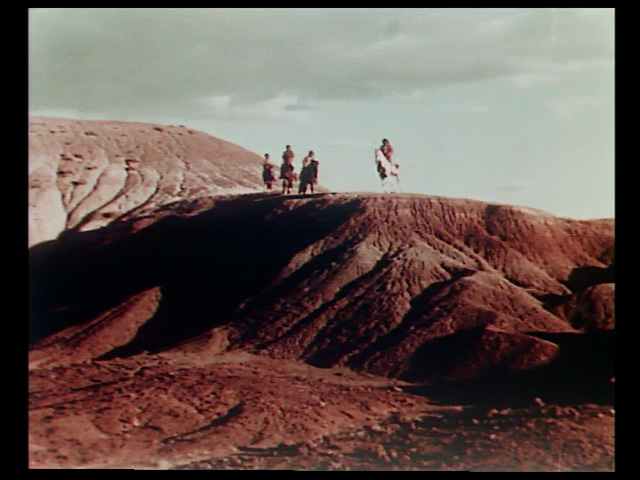


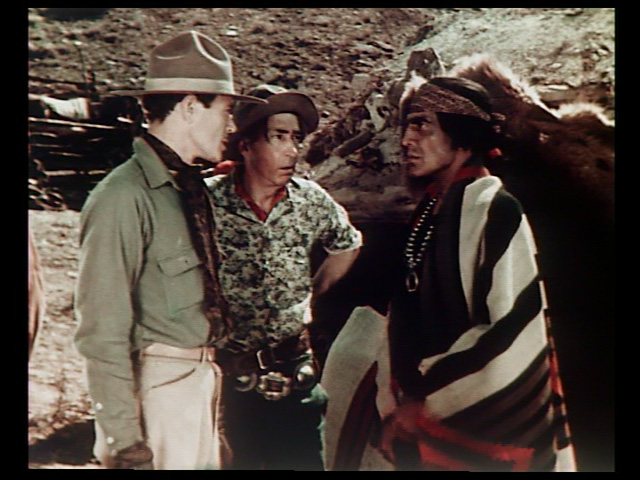
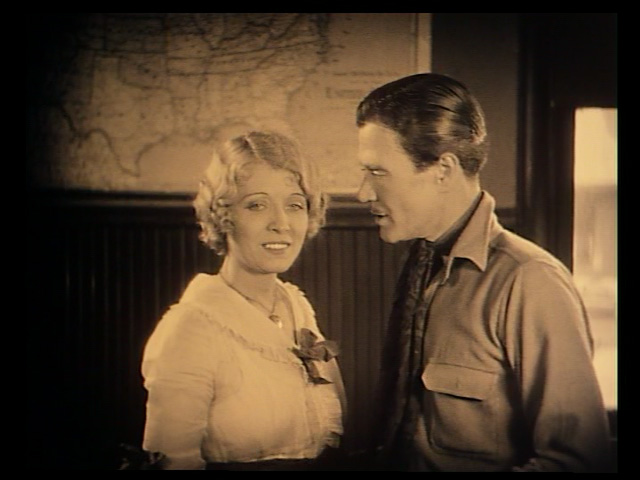
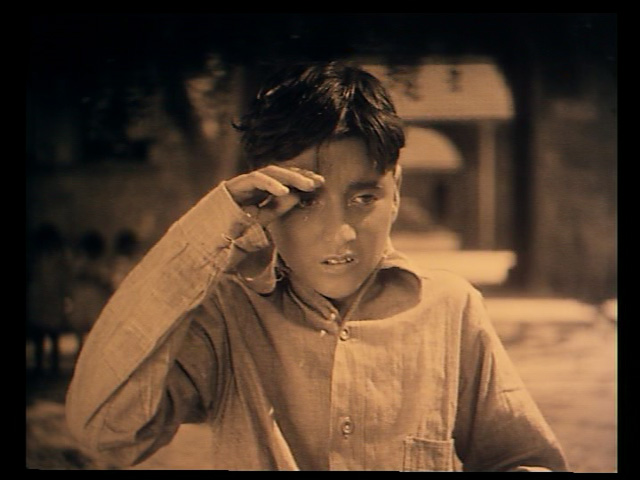


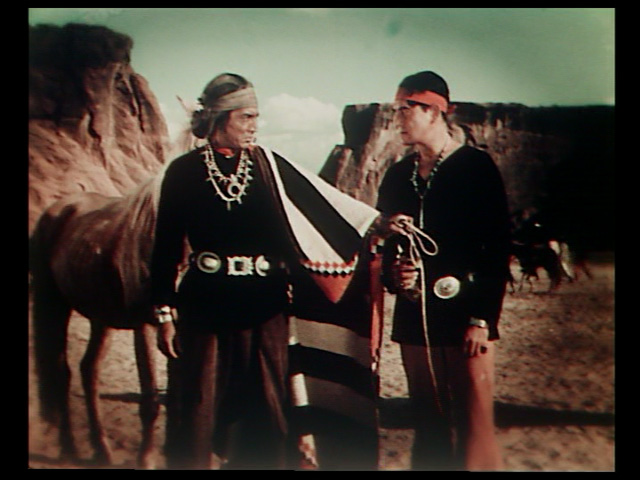


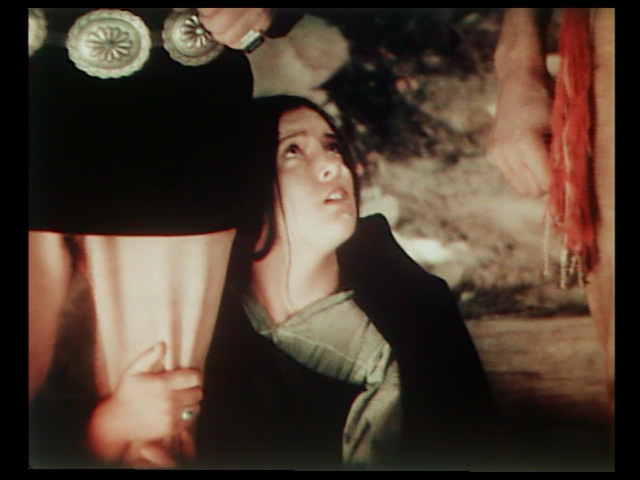
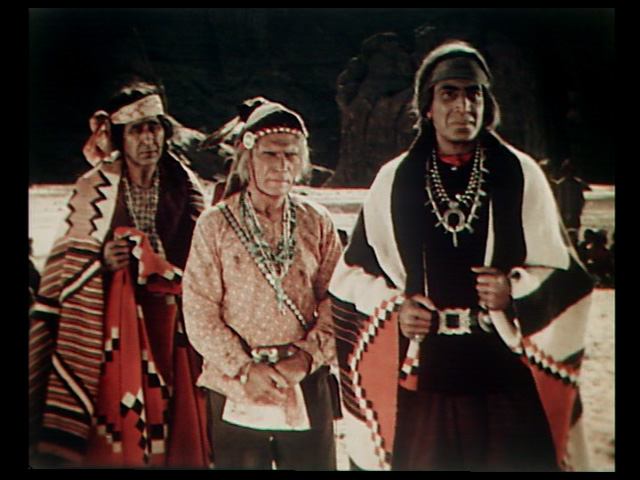
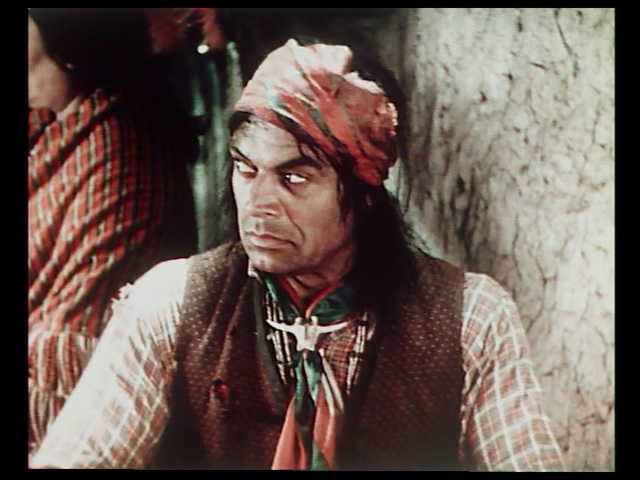


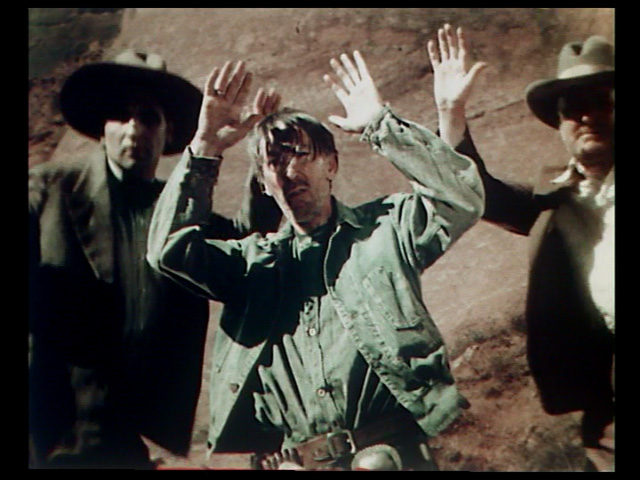



One Comment
Comments are closed.